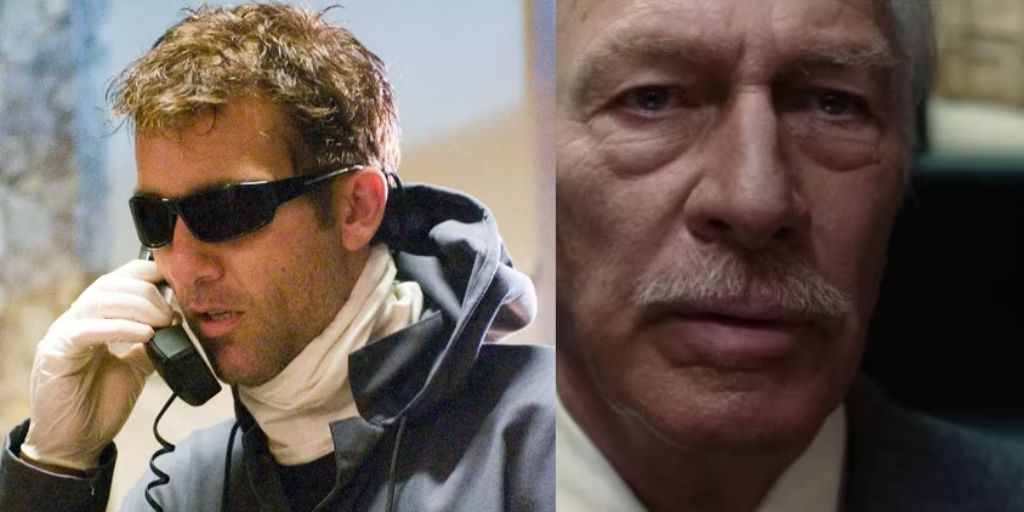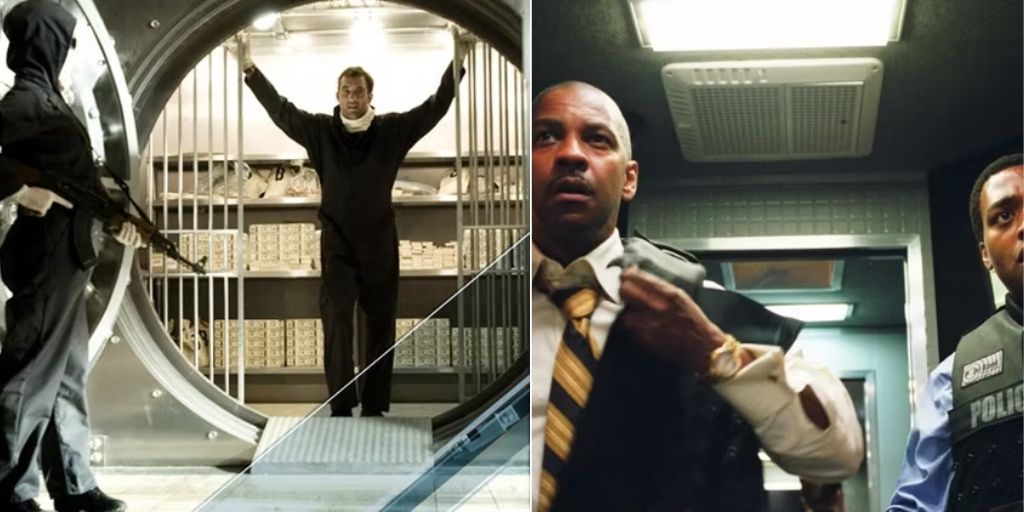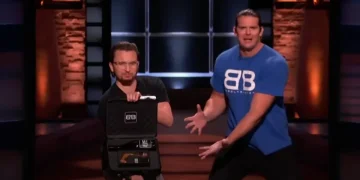In the opening scene of Spike Lee’s Inside Man, Dalton Russell (played by Clive Owen) sits in a small cell he has made for himself. He is bragging about executing the perfect bank robbery. He hasn’t left the bank yet; the cell is actually part of the wall in the bank’s storage room.
But he is confident that he will escape. In this dark space, he talks about the robbery, sharing details about who, what, where, when, and why. He insists everything is going as planned. Every great heist film has a character like Dalton. He knows more than the audience, which is what makes the genre exciting.
The thrill comes from following every twist and turn. But does Dalton actually commit a crime without victims in Inside Man? Is it possible to commit a crime without victims? Discussions about stealing from wealthy people and giving their money to the poor are often central to these kinds of stories.
Later in the film, even though the bank is surrounded by many armed NYPD officers, Dalton explains how he will escape when asked. When Detective Keith Frazier (Denzel Washington), who has earned Dalton’s reluctant respect, asks why Dalton doesn’t just leave through the front door, Dalton responds, “I will. I’m going to walk out that door when I’m good and ready.”
Dalton is confident because he has thought of everything. So, it’s no surprise when he eventually walks out of the bank with a bag full of blood diamonds. What is surprising is how few of the questions Dalton answered in his opening speech. By the time he escapes, the details of the heist—who, what, where, when, and why—are all revealed, leaving many new questions for Detective Frazier and the audience.
The ending of the film is very stylish and sets Inside Man apart from other heist movies. Many people believe that Dalton Russell has a “Robin Hood” quality. Saying his actions are “victimless” is complicated and hard to define. Even if Dalton had good reasons, he put many lives at risk.
His arrogance makes him an interesting character, but it doesn’t change the fact that he endangered innocent people. The interviews with the hostages conducted by Frazier and Mitchell give viewers more insight into their experiences.

Dalton’s actions weren’t necessary, even if they created a great film with excellent performances by Washington and Owen. Chiwetel Ejiofor’s solid performance as Frazier’s partner, Detective Bill Mitchell, should also be noted. Foster and Plummer perform well too.
The Who: Key Characters in Inside Man
Detective Keith Frazier needs this job to succeed. After being falsely accused of stealing money from a previous crime scene, he wants to prove he deserves a promotion. With his boss away, Frazier is assigned to negotiate Dalton’s arrest and the safe release of the hostages.
Arthur Case (Christopher Plummer), the wealthy bank owner, is worried about the robbery. It is the first bank he opened, and he keeps his biggest secrets there. Madeline White (Jodie Foster) is a powerful fixer in New York who handles sensitive and secret matters. White gets a call from Case about a very delicate and valuable situation. Her job is to keep the contents of safe deposit box 392 hidden.
Only Frazier and his partner Bill Mitchell have clear goals: keep the hostages safe and catch Dalton. Russell, Case, and White have hidden motives, and their true intentions are revealed slowly. Lee expertly builds suspense and intrigue throughout the film. Inside Man features a talented cast and is one of the best heist films ever made.
The What: Was There Really No Crime?
When they finally enter the bank after the robbery, Frazier and his team (including Ejiofor and Willem Dafoe) find no suspects (they left with the hostages), no victims (the staged hostage murder was fake), no real weapons (they were toys), and nothing stolen from the bank. The vault is open, but all the valuables are still there. The police leave with no clues, raising the question of why the robbers were there at all.

Soon, Frazier discovers a clue: security deposit box 392. Oddly, the box isn’t listed in the bank’s records dating back to the 1940s. Frazier believes the box is important and must belong to someone who has been with the bank since it opened, leading him to Case. Frazier and Mitchell return to search for the box and find some Juicy Fruit (a joke with Russell), a large diamond ring, and a note from Russell saying, “Follow the ring.”
The Where and When: The Origin of the Diamonds
The focus is less on the robbery itself and more on where the diamonds came from. Madeline White, who has connections with the mayor and believes she has influence over Frazier, is given the chance to negotiate with Russell.
She offers him a lighter sentence and hush money to keep the contents of the box secret, but Russell rejects her offer. Russell has proof of Case’s dealings with Nazis. Case later admits to White that he became wealthy by working with Nazis and betraying a Jewish friend during World War II.
Case regrets his actions, but the question is whether his past mistakes should still label him as a “bad guy.” He has tried to make up for his past, but some wrongs may be too great to forgive. Dalton Russell’s elaborate plan exposes Case’s secret and makes the audience consider whether Case can be forgiven.
White gets promises from Russell that he won’t reveal what he knows about Case. In return, Russell demands that if he ever goes to trial, Case’s wealth will support him. White overestimates her influence. She thinks she can control Frazier by offering to clear his record, but Frazier records her corruption as a backup.
This leads to White’s second mistake. Russell no longer needs anything from Case or White after the heist, so he leaves the ring in the box for Frazier to find before walking out of the bank.
The Why: Moral Choices and Cover-Ups
Case and White have clear reasons to cover up their past. Case has spent years trying to make up for his actions, and his reputation would be ruined if people found out about his Nazi ties. White is concerned about her own reputation. As a top fixer in New York, a failure like this would harm her status.
Russell’s motives, however, seem more righteous. After leaving the bank, Russell’s partner asks why he left the ring behind, suggesting it wasn’t just to expose Case’s secrets. Russell says in his final voiceover, “[isn’t] worth much if you can’t face yourself in the mirror.”
The Final Scene: Denzel Washington’s Triumph
Frazier returns home with his Detective First-Grade certificate, finding his girlfriend’s brother drunk on his couch. He and his girlfriend (Cassandra Freeman) want to move to a bigger place and get engaged, but Frazier was waiting for the promotion.

As he takes out his belongings, he discovers a diamond—perfect for an engagement ring—that Russell slipped into his coat on his way out of the bank. This concludes a Robin Hood-like heist that Dalton claims was flawless.
Even though the heist was perfectly carried out and no one died, it doesn’t mean it was free of victims. From Frazier’s perspective, Dalton’s heist was not only victimless but also led to his restored reputation, a promotion, and a new fiancée.
However, for those who were threatened, beaten, and held hostage, the psychological trauma could lead to PTSD. Case and White, while not typical victims, suffer due to Dalton’s complex plan. Inside Man shows there are many forms of victimization, and it’s not always clear who the real victims are.
Inside Man is available for streaming on Netflix in the U.S.





